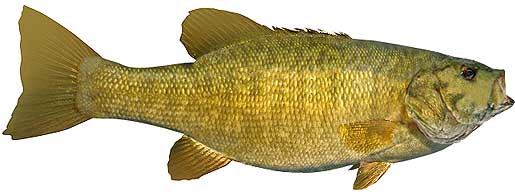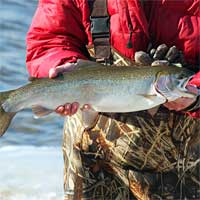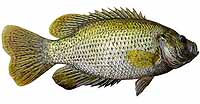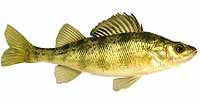Fishing Report For Moore Reservoir, NH
By Rick Seaman
Last updated on .
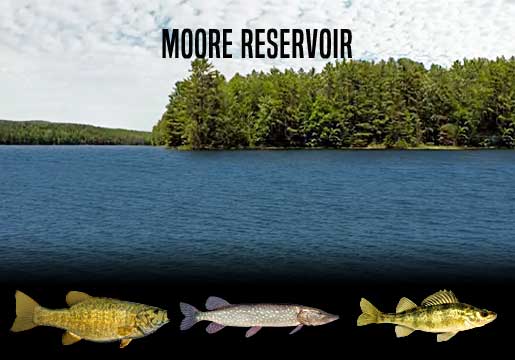
Fishing Reports
Popular Fish Species Moore Reservoir, NH
Smallmouth Bass
Current Report: Fair To Good
Moore Reservoir is considered a pretty decent smallmouth bass fishery. This is not a lake with lots of trophy bass, but a solid base of keeper smallies. From the Highway 93 Bridge, all the way to the area around the North Littleton Boat Launch, is ideal smallie water.
FALL. Late Fall is in full swing and smallmouth have followed schools of baitfish back into deeper water, 15 to 30 feet deep. They thrive in the cold, clean water, which is an ideal environment for them. Locals report that tube jigs, and drop shot rigs with small worms or shad shaped plastics, are popular here. Good schools are being located around rocky shorelines and points near Pine Island. Fishing shallow for smallmouth is often good on cold, windy, cloudy and rainy days. Worms, jigs, spoons, swimbaits, and slow-rolled spinnerbaits, are also successful, when bass are shallow to mid depth.
WINTER. Winter will isolate them around deeper structure, points, flats and creek channels, often suspending in open water above these features. Before, during and after ice fishing season, they can generally be found from 20 to 40 feet deep. Jigging spoons, tube baits, drop-shot worms, jigs and Ned rigs tend to temp smallmouth in deep water. I like to work these deeper haunts very slowly, as the bass are somewhat sluggish. Here they hold, feeding less frequently, awaiting warmer water to return in Spring.
SPRING. After ice out, when water temperatures rise into the 50's, smallmouth move from deep wintering spots to shallower water, just outside spawning areas. They feed heavily in 8 to 20 feet of water at this time, and are typically caught on jerkbaits, crankbaits, tube baits, Ned rigs, and crayfish imitating plastics. Once water warms into the high 50's, they move into 2 to 8 feet of water, and create nests in gravel or sand areas, then lay their eggs. Females then move to deeper water and males remain to guard the eggs, and then the fry. After a couple weeks, the males also move into 15 to 20 feet deep, and feed aggressively. Crankbaits, tube baits, Ned rigs, plastic worms, spoons and swimbaits are catching smallies during this period.
SUMMER. Smallmouth bass are currently feeding shallow early and late in the day in 8 to 28 feet of water. They are being caught on topwater, crankbaits, swimbaits, Ned rigs and tube baits. Smallmouth bass here feed on crawfish and small sunfish. They prefer rocky or gravel bottom areas, as this is where crayfish live. During the hotter parts of the day, they are being caught on points, humps, and ledges around 20 to 35 feet deep. Often these deeper fish tend to school, so finding them can deliver some fast action. Anglers fishing the steep shorelines on the Littleton side of the lake, drop-offs along the main channel, and rocky points, are reporting good catches.
Northern Pike
Current Report: Good
FALL. As the weather starts turning cold, water temperatures cool fastest in the shallows. This brings baitfish back into deeper water, and northerns follow along with this food source. They hang around weedbed edges, main-lake points, reefs, and rocky shorelines to ambush prey in 10 to 20 feet of water. This is a prime feeding time as they prepare for winter. It is also a good time to catch a trophy pike.
WINTER. Pike remain active in Winter, often congregating in or near remaining weedbeds, especially along the edges. Other structure options include long points, reefs, ledge drop-offs, and rocky humps, ideally nearby deeper water. Ice fishing was good here in winter. At times, when oxygen is depleted in deeper water, northerns suspend directly under the ice, where maximum oxygen is available. Other times they hold on structure in 8 to 25 feet of water, sometimes deeper.
SPRING. After ice out, northern pike migrate to shallow, warmer pockets, bays and coves. Once water temperatures reach around 40 degrees, they move into even shallower areas with vegetation, to spawn. Ideal depths range from 1 to 8 feet. After spawning they linger in the shallow bays for a short period. Once water temperatures rise into the 50's, they move to deeper weedbeds and shallow structures adjacent to even deeper water. Bright colors, whites and flashy lures appeal to these predators. Noisy topwater lures can also produce some spectacular strikes. Alternate between baits until you identify which one triggers the most bites for the day. After spawning, these predators move into 8 to 15 feet of water.
SUMMER. Northern pike scatter all around the lake, rather than gather in groups. This makes them difficult to locate. During the heat of the day they are holding from 20 to 35 feet deep, on ledges, reefs, weedbeds, rock piles, islands and channel edges. Some of the larger specimens are suspending in open water, just outside feeding areas. Trolling or drift fishing produces some nice catches, using spoons, big spinners, cut bait, and deep diving crankbaits. Early and late in the day, they move shallow to feed and can be caught around most weedy shorelines, in 8 to 25 feet of water. Noisy topwater lures, spinnerbaits and Johnson spoons with curly-tail grubs, are catching nice pike shallow.
Yellow Perch
Current Report: Fair To Good
A stable population of yellow perch reside here, providing a steady food source for larger, predator fish, plus they provide an excellent fishing experience for anglers of all ages.
FALL. As Fall is working its way toward Winter, anglers are finding yellow perch feeding aggressively in 12 to 18 feet of water, especially around weed lines and drop offs, Later in the Fall, they begin migrating toward Winter holding areas, often in the deeper sections around the deeper edges of weedbeds, drop offs along flats, channel edges, and humps. Minnows, spinners, spoons and crankbaits are ideal this time of year.
WINTER. The cold of winter drives perch deeper again in search of food and stable water conditions. Mid-depth flats are ideal Winter holding spots. Early in Winter, perch are caught when they are feeding in weedy areas, in 10 to 20 of water. Later in Winter, as the lake freezes over they descend into 12 to 30 feet of water. Fishing for perch through the ice was good again this year, using minnows, mealworms, maggots, and nightcrawlers.
SPRING. Perch spawn in Spring when the water temperature warms to the mid 50's and mid 60's. Anglers are beginning to catch them in 2 to 8 feet of water using minnows, mealworms, maggots, and nightcrawlers. Docks, weed lines, drop offs all attract yellow perch searching for a meal. Later in Spring, they drop into 10 to 15 feet of water. Weed lines and rocky shorelines have historically delivered decent stringers of perch.
SUMMER. Fat yellow perch here feed primarily on small fish and invertebrates. Spinners, underspins, small crankbaits, mealworms, nightcrawlers and maggots are catching perch in 19 to 25 feet of water. In early Summer, plus the first and last hours of the day ,seek them out in feeding zones, 6 to 12 feet deep. Drop-offs into channels, and in areas with submerged vegetation are key feeding spots.
Fishing Video
Fish species to fish for...
Guide to fishing for largemouth bass, smallmouth bass, black crappie, rainbow trout, brook trout, brown trout, rock bass, yellow perch, chain pickerel and northern pike at Moore Reservoir in New Hampshire.
 Moore Reservoir is a 3,500-acre lake with nearly 30 miles of shoreline, which is fed by the Connecticut River. Nice populations of bass, crappie, trout, sunfish, perch, pickerel and pike all thrive here. Numerous locations provide access to areas for fishing from the bank.
Moore Reservoir is a 3,500-acre lake with nearly 30 miles of shoreline, which is fed by the Connecticut River. Nice populations of bass, crappie, trout, sunfish, perch, pickerel and pike all thrive here. Numerous locations provide access to areas for fishing from the bank.
Primary fish species to catch
Click images for fishing tips and details about each species.
Today's Weather & Forecast
Public Boat Launch Ramps & Landings
Click here for boat ramps.
Fishing License
Click here for a New Hampshire Fishing License.
Map - Fishing & Access
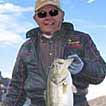 Rick Seaman is a fishing enthusiast with over five decades of fishing experience, a retired tournament fisherman, author of numerous published articles on fishing, and co-author of the book "Bass Fishing - It's not WHAT you throw, It's WHERE you throw it".
Rick Seaman is a fishing enthusiast with over five decades of fishing experience, a retired tournament fisherman, author of numerous published articles on fishing, and co-author of the book "Bass Fishing - It's not WHAT you throw, It's WHERE you throw it".
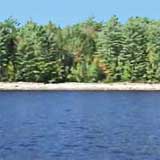 Contact Information
Contact Information
Crazy Horse Campground
788 Hilltop Rd
Littleton, NH 03561
603 444-2204
Fishing lakes in each state
112825
Moore Reservoir, NH Report
NEW HAMPSHIRE


Information about fishing lakes in NH
Fishing for bass, crappie, trout, sunfish, perch, pickerel and pike in western New Hampshire.


